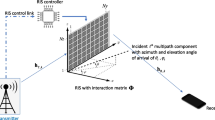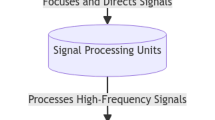Abstract
The design of a security scheme for beamforming prediction is critical for next-generation wireless networks (5G, 6G, and beyond). However, there is no consensus about protecting beamforming prediction using deep learning algorithms in these networks. This paper presents the security vulnerabilities in deep learning for beamforming prediction using deep neural networks in 6G wireless networks, which treats the beamforming prediction as a multi-output regression problem. It is indicated that the initial DNN model is vulnerable to adversarial attacks, such as Fast Gradient Sign Method , Basic Iterative Method , Projected Gradient Descent , and Momentum Iterative Method , because the initial DNN model is sensitive to the perturbations of the adversarial samples of the training data. This study offers two mitigation methods, such as adversarial training and defensive distillation, for adversarial attacks against artificial intelligence-based models used in the millimeter-wave (mmWave) beamforming prediction. Furthermore, the proposed scheme can be used in situations where the data are corrupted due to the adversarial examples in the training data. Experimental results show that the proposed methods defend the DNN models against adversarial attacks in next-generation wireless networks.









Similar content being viewed by others
Data Availability
Dataset used in the manuscript can be found at:https://deepmimo.net
References
Lichtman, M., Rao, R., Marojevic, V., Reed, J., Jover, R.P.: in 2018 IEEE international conference on communications workshops (ICC workshops) (2018), pp. 1–6. https://doi.org/10.1109/ICCW.2018.8403769
Catak, E., Durak-Ata, L.: Computers & electrical engineering 61, 184 (2017). https://doi.org/10.1016/j.compeleceng.2016.11.039. https://www.sciencedirect.com/science/article/pii/S0045790616309648
Catak, F.O., Kuzlu, M., Catak, E., Cali, U., Unal, D.: Security concerns on machine learning solutions for 6G networks in mmWave beam prediction. Phys. Commun. (2022). https://doi.org/10.1016/j.phycom.2022.101626
Zheng, Z., Wang, L., Zhu, F., Liu, L.: Potential technologies and applications based on deep learning in the 6G networks. Comput. Electric. Eng. 95, 107373 (2021)
Liu, G., Huang, Y., Wang, F., Liu, J., Wang, Q.: 5G features from operation perspective and fundamental performance validation by field trial. China Commun. 15(11), 33 (2018)
De Alwis, C., Kalla, A., Pham, Q.V., Kumar, P., Dev, K., Hwang, W.J., Liyanage, M.: Survey on 6G frontiers: trends, applications, requirements, technologies and future research. IEEE Open J. Commun. Soc. 2, 836 (2021)
Zhang, Z., Xiao, Y., Ma, Z., Xiao, M., Ding, Z., Lei, X., Karagiannidis, G.K., Fan, P.: 6G wireless networks: Vision, requirements, architecture, and key technologies. IEEE Vehic. Technol. Magazine 14(3), 28 (2019)
Giordani, M., Polese, M., Mezzavilla, M., Rangan, S., Zorzi, M.: Toward 6G networks: Use cases and technologies. IEEE Commun. Magazine 58(3), 55 (2020)
Saad, W., Bennis, M., Chen, M.: A vision of 6G wireless systems: Applications, trends, technologies, and open research problems. IEEE network 34(3), 134 (2019)
Khan, L.U., Yaqoob, I., Imran, M., Han, Z., Hong, C.S.: Perceptual enhancement of low light images based on two-step noise suppression. IEEE Access 8, 147029 (2020). https://doi.org/10.1109/ACCESS.2020.3015289
Sheth, K., Patel, K., Shah, H., Tanwar, S., Gupta, R., Kumar, N.: A taxonomy of AI techniques for 6G communication networks. Comput. Commun. 161, 279 (2020)
Du, J., Jiang, C., Wang, J., Ren, Y., Debbah, M.: Machine learning for 6G wireless networks: Carrying forward enhanced bandwidth, massive access, and ultrareliable/low-latency service. IEEE Vehic. Technol. Magazine 15(4), 122 (2020). https://doi.org/10.1109/MVT.2020.3019650
Gui, G., Liu, M., Tang, F., Kato, N., Adachi, F.: 6G: Opening new horizons for integration of comfort, security, and intelligence. IEEE Wire. Commun. 27(5), 126 (2020). https://doi.org/10.1109/MWC.001.1900516
Ozpoyraz, B., Dogukan, A.T., Gevez, Y., Altun, U., Basar, E.: Deep learning-aided 6G wireless networks: A comprehensive survey of revolutionary phy architectures (2022)
Ali, S., Saad, W., Rajatheva, N., Chang, K., Steinbach, D., Sliwa, B., Wietfeld, C., Mei, K., Shiri, H., Zepernick, H.J., Chu, T.M.C., Ahmad, I., Huusko, J., Suutala, J., Bhadauria, S., Bhatia, V., Mitra, R., Amuru, S., Abbas, R., Shao, B., Capobianco, M., Yu, G., Claes, M., Karvonen, T., Chen, M., Girnyk, M., Malik, H.: 6G white Paper on Machine Learning in Wireless Communication Networks (2020)
Yang, H., Alphones, A., Xiong, Z., Niyato, D., Zhao, J., Wu, K.: Artificial-intelligence-enabled intelligent 6G networks. IEEE Network 34(6), 272 (2020). https://doi.org/10.1109/MNET.011.2000195
Dang, S., Amin, O., Shihada, B., Alouini, M.S.: What should 6G be? Nat. Electron. 3(1), 20 (2020)
Porambage, P., Gür, G., Osorio, D.P.M., Liyanage, M., Ylianttila, M.: in Proc. IEEE Joint Eur. Conf. Netw. Commun.(EuCNC) 6G Summit (2021), pp. 1–6
Kuzlu, M., Fair, C., Guler, O.: Role of artificial intelligence in the internet of things (IoT) cybersecurity. Disc. Int. Things 1(1), 1 (2021)
Siriwardhana, Y., Porambage, P., Liyanage, M., Ylianttila, M.: in Proc. IEEE Joint Eur. Conf. Netw. Commun.(EuCNC) 6G Summit (2021), pp. 1–6
Catak, E., Catak, F.O., Moldsvor, A.: in 2021 IEEE International black sea conference on communications and networking (BlackSeaCom) (2021), pp. 1–6. https://doi.org/10.1109/BlackSeaCom52164.2021.9527756
Tuna, O. Faruk., Catak, F. Ozgur., Eskil, M. Taner: arXiv e-prints arXiv:2102.04150 (2021)
Bai, T., Luo, J., Zhao, J., Wen, B., Wang, Q.: arXiv e-prints arXiv:2102.01356 (2021)
Vardhan, R.: An ensemble approach for explanation-based adversarial detection. Ph.D. thesis (2021)
Michels, F., Uelwer, T., Upschulte, E., Harmeling, S.: arXiv preprint arXiv:1906.03612 (2019)
Lin, Y., Zhao, H., Ma, X., Tu, Y., Wang, M.: Adversarial attacks in modulation recognition with convolutional neural networks. IEEE Trans. Reliabil. 70(1), 389 (2021). https://doi.org/10.1109/TR.2020.3032744
Jiang, Y., Yin, G., Yuan, Y., Da, Q.: Project gradient descent adversarial attack against multisource remote sensing image scene classification. Sec. Commun. Net. 2021 (2021)
Fostiropoulos, I., Shbita, B., Marmarelis, M.:
Hinton, G., Vinyals, O., Dean, J.: Distilling the knowledge in a neural network (2015)
Papernot, N., McDaniel, P., Wu, X., Jha, S., Swami, A.: Distillation as a defense to adversarial perturbations against deep neural networks (2016)
Alkhateeb, A.: arXiv preprint arXiv:1902.06435 (2019)
Remcom, Wireless InSite. http://www.remcom.com/wireless-insite. Accessed: 2021-09-30
DeepMIMO, ’O1’ scenario. https://deepmimo.net/scenarios/o1-scenario/. Accessed: 2021-09-30
DeepMIMO, ’I1’ scenario. https://deepmimo.net/scenarios/i1-scenario/. Accessed: 2021-09-30
DeepMIMO, ’I3’ scenario. https://deepmimo.net/scenarios/i3-scenario/. Accessed: 2021-09-30
Andriushchenko, M., Flammarion, N.: arXiv e-prints arXiv:2007.02617 (2020)
Acknowledgements
This work was supported in part by the Commonwealth Cyber Initiative, an investment in the advancement of cyber R &D, innovation, and workforce development in Virginia. For more information about CCI, visit cyberinitiative.org
Author information
Authors and Affiliations
Corresponding author
Ethics declarations
Conflict of Interest
The authors have no conflicts of interest to declare. All co-authors have seen and agreed with the contents of the manuscript. We certify that the submission is original work and is not under review at any other publication.
Ethical approval
This article does not contain any studies with human participants or animals performed by any of the authors.
Informed consent
Not applicable.
Additional information
Publisher's Note
Springer Nature remains neutral with regard to jurisdictional claims in published maps and institutional affiliations.
Rights and permissions
Springer Nature or its licensor (e.g. a society or other partner) holds exclusive rights to this article under a publishing agreement with the author(s) or other rightsholder(s); author self-archiving of the accepted manuscript version of this article is solely governed by the terms of such publishing agreement and applicable law.
About this article
Cite this article
Kuzlu, M., Catak, F.O., Cali, U. et al. Adversarial security mitigations of mmWave beamforming prediction models using defensive distillation and adversarial retraining. Int. J. Inf. Secur. 22, 319–332 (2023). https://doi.org/10.1007/s10207-022-00644-0
Published:
Issue Date:
DOI: https://doi.org/10.1007/s10207-022-00644-0




